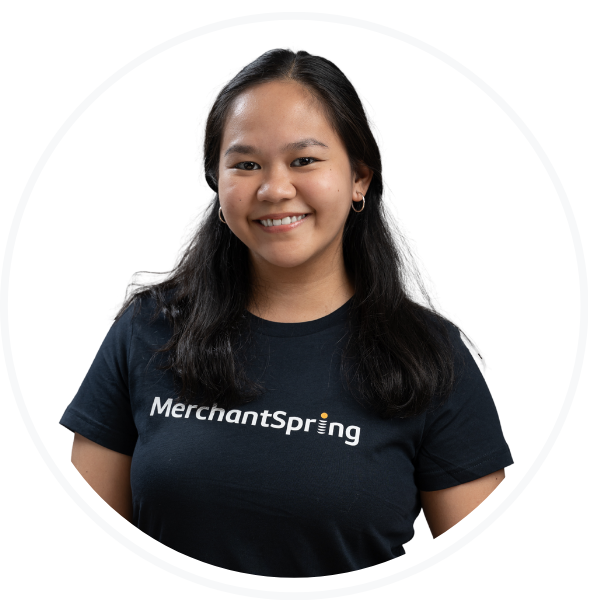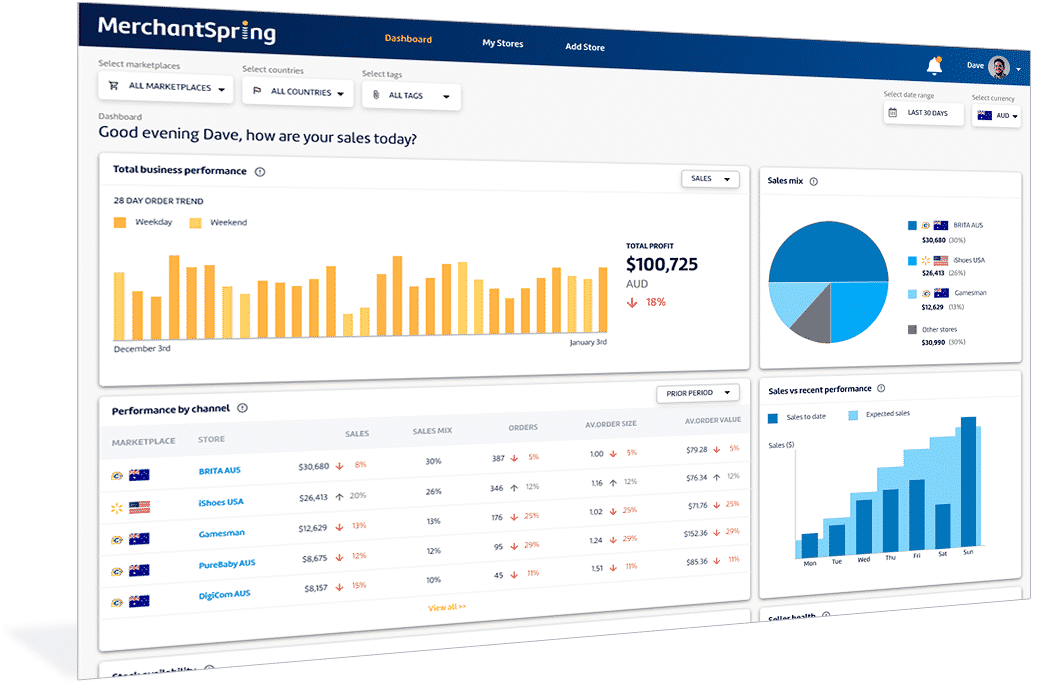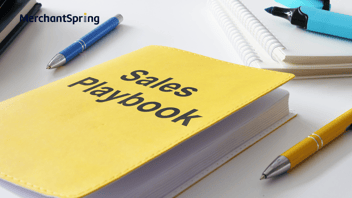Building Seller Communities: New Strategic Edge for Amazon Agencies
Overview
Modern Amazon agencies and eCommerce SaaS providers are discovering a powerful new growth lever: community-led growth. Instead of relying solely on cold outreach or paid lead funnels, building a private seller community can create a trust-driven pipeline of clients. In a recent episode of Marketplace Masters (MerchantSpring’s agency growth podcast), host Paul Sonneveld spoke with Anthony Willis, Director of Amazon Innovation at Horison Marketing, about how his agency transformed a value-packed seller community into a strategic growth engine. This blog distills their conversation into actionable insights – from the “why” behind community-led growth to the operational blueprint, engagement tactics, and lessons learned along the way.
Why Community-Led Growth for Agencies?
In a crowded market with thousands of competing Amazon service providers, Horison Marketing knew it needed to stand out beyond cold calls and sales pitches. Anthony Willis emphasised that the decision to build a community came down to one critical factor: trust. With so many agencies “vying for the same business,” brands are naturally cautious about whom to partner with. Traditional lead generation (like outreach emails or ads) often isn’t enough to overcome this “trust gap.”
“It kind of comes down to trust… It’s a big risk for a brand to engage with a business they only know from a few sales calls.”
— Anthony Willis, Director of Amazon Innovation at Horison Marketing
By investing in a private seller community, Horison aimed to build relationships over time before any sales conversation. A community allows potential clients (Amazon sellers) to learn from the agency’s expertise, interact with peers, and see real value before discussing services. In Willis’s view, if a brand has been engaging with Horison’s community and gaining insights freely, Horison will be top-of-mind when that brand is ready for more hands-on help. In short, community-led engagement can warm up prospects in a way traditional funnels struggle to match – establishing credibility and rapport long before a formal sales pitch.
Operational Blueprint: Building and Delivering Value Daily
Launching a community is not a “quick fix” growth hack – it requires a thoughtful plan and consistent execution. Horison’s approach was to deliver value every single day. They chose Skool (an online community platform, spelled S-K-O-O-L) as the hub, leveraging its features to organise content and discussions. Here’s Horison’s blueprint for running a thriving seller community:
- Daily Educational Posts: The team committed to posting something of value every day. This could range from quick educational tips and Amazon news updates, to longer-form insights. Some days they share a new podcast episode or webinar replay; other days they might offer a how-to guide or a prompt for sellers to discuss their challenges. The key is consistency – members learn to expect fresh, relevant content whenever they log in.
- Interactive “Ask the Experts”: Horison invites community members to submit their store data or specific questions via a form, and then the team creates a custom strategy or analysis for that seller. They’ll post these strategy teardowns back to the community. Not only do those individual sellers get value, but everyone benefits from seeing real examples of problems solved. This kind of proactive consulting (done openly in the group) showcases Horison’s expertise in a helpful, non-salesy way.
- Structured Learning Paths (Classrooms): To cater to sellers of all experience levels, Horison is developing a series of classroom sessions within the community. These start from the very basics – e.g. “How to create a Seller Central account” – and build up to advanced topics like deep-dive SEO, Amazon Advertising optimisation, and even DSP strategies. Members can follow a self-paced curriculum, turning the community into a one-stop learning academy for Amazon success. This structured content ensures that even newcomers find value and can level up their skills through the platform.
- Resource Library & Tools: Horison also stocks a resources section with useful tools and templates. In fact, some of the custom software tools that Horison normally sells to clients (for example, PPC optimisation scripts or analytics dashboards) are made available for free to community members. This exclusive access rewards members and makes the community feel like a VIP club for up-and-coming sellers.
Crucially, all these efforts ladder up to one principle: provide value first. The content is education-led and genuinely helpful – not thinly veiled sales pitches. By freely sharing knowledge and tools, Horison nurtures goodwill and authority. Community members who benefit from this content are far more likely to trust Horison when they eventually need agency services.
“We do not want it to be a place where sellers feel like they’re being sold to every five minutes. It has to be value first.”
— Anthony Willis
Maintaining this value-first, no-hard-sell atmosphere required setting some ground rules. Horison moderates all posts (including those from external partners, which we’ll discuss shortly) to ensure they align with the community’s helpful ethos. Promotional spam is not tolerated. Instead, even partners are encouraged to share tips, how-tos, case studies or industry insights. Any call-to-action is kept gentle – for instance, a partner might end an educational post with “contact us if you’d like to learn more,” but overt sales pitches are off-limits. By policing this carefully, Horison protects the community experience so that sellers feel safe engaging without being bombarded by ads.
Gamification and Fostering Peer Engagement
One of the toughest challenges in any new community is sparking member-to-member interaction. Early on, many users join, consume content quietly, and hesitate to participate. Horison tackled this by using gamification techniques built into the Skool platform to encourage engagement:
- Points and Levels: Members earn points for every meaningful action – whether it’s making a post, commenting on someone else’s question, or even just logging in consistently. As points accumulate, members can level up within the community. This appeals to our innate desire for recognition and status. Horison’s team noticed that once a few members started climbing the leaderboard, others became more motivated to chime in as well.
- Unlockable Rewards: To make the levels truly rewarding, Horison offers special perks that unlock at higher engagement levels. For example, Willis revealed they might take a premium tool that Horison typically sells for £1,500 and offer it as a free unlockable resource for members who reach, say, Level 4 or Level 5 in the community. That’s a significant reward, and it sends a clear message: those who contribute and engage the most get access to the best goodies. Other potential unlocks include advanced training modules or one-on-one consulting sessions exclusive to top contributors.
- Peer Recognition: The platform’s leaderboard and achievement badges publicly showcase active members. This not only incentivises individuals, but it also normalises participation. When new users join and see others asking and answering questions daily, it lowers the barrier for them to speak up. Horison supplements this by occasionally prompting discussions (e.g., posing a question to the group) to spark peer-to-peer advice sharing.
These tactics have begun to pay off. Willis notes that while a certain portion of any community will always lurk (and that’s okay), a strong core of highly engaged members makes all the difference. In Horison’s case, they aim for roughly 20–30% of members to be actively engaged – posting, replying, and helping each other. That engagement level creates a virtuous cycle: active members get more value, lurkers see the activity and may join in, and the community becomes self-sustaining rather than relying solely on the hosts to drive every conversation.
“People are nervous to engage at first. But once you start, you find it’s really not that bad – you end up leaning on the community for support, advice, maybe a bit of motivation… it becomes a really useful tool.”
— Anthony Willis
By gamifying interaction and “rewarding the right behaviours,” Horison is cultivating a true peer network. Sellers in the group not only learn from Horison’s team, but also mentor each other, celebrate wins, and troubleshoot common problems together. This kind of peer learning is invaluable – it makes the community far more than just an extended marketing channel for the agency; it’s a living ecosystem where members derive value directly from one another’s contributions.
Partnership Dynamics: A Win-Win Growth Strategy
How did Horison initially populate its community with quality members? The answer lies in strategic partnerships. Rather than try to sign up random sellers one by one, Horison partnered with other service providers in the e-commerce ecosystem – companies that serve Amazon sellers in complementary ways (e.g. software tools, logistics, accounting, etc.). These partners were invited to bring their clients into Horison’s community as a value-add.
The logic is elegant: each partner’s clients join the community to access Horison’s content plus insights from other experts, and in return, partners gain exposure to a wider pool of engaged sellers beyond their own client list. Willis gave an example: imagine 10 partner companies, each inviting 100 of their clients into the community. Every partner then potentially gains visibility with 900 additional sellers (the clients of the other nine partners). Everyone benefits: sellers get a richer community with multi-faceted expertise, partners get in front of new prospective customers, and Horison grows the community by leaps and bounds with the right kind of members (serious Amazon business owners).
“For partners, it’s opening the door to a bunch of highly engaged sellers — prime clients they wouldn’t have had access to otherwise.”
— Anthony Willis
To coordinate this win-win strategy, Horison formalised partner agreements and content guidelines. Partners are encouraged to be the subject-matter experts in their domain within the community (for instance, a logistics provider might host a live Q&A on optimising Amazon supply chain, or a software vendor might share a case study on increasing conversion rates). This positions partners as helpful thought leaders, not just vendors. In exchange, Horison asks partners to occasionally promote the community to their own audience – for example, by emailing their clients about an upcoming co-hosted webinar or exclusive community resource. These cross-promotions have already yielded tangible results: Horison has seen new client leads come directly from partner referrals and co-branded content. In Willis’s words, some community members have effectively “graduated” into warm sales conversations with Horison’s team, thanks to the trust built through community interactions.
It’s important to note that Horison carefully vets its partners to ensure a mutual fit. They look for providers who share a value-first mindset and won’t violate the “no hard sell” rule in the community. This careful curation means early partners are highly engaged – Willis mentioned speaking with key partners at least weekly to coordinate activities. The momentum is strong, and Horison is actively expanding the circle of partnerships. There are still many e-commerce niches to cover (Horison is keen to include experts in accounting, logistics, SEO, international expansion, and more). If a tool vendor or service provider brings unique value for Amazon sellers, Horison is open to exploring a partnership. In fact, both agencies and eCommerce SaaS firms reading this can take note: partnering to build a shared community can dramatically extend your reach. It creates a multiplier effect where each participant gains access to the others’ networks in a trusted environment.
Measuring Success and Early Outcomes
With the community initiative still in its relative infancy, how does Horison gauge success? Willis shared a few key metrics and milestones they monitor:
- Member Growth (Quality & Quantity): Raw membership numbers are tracked, but with a careful eye on quality. Rather than boasting about vanity metrics, Horison is more interested in who those members are. Are they the right profile (active Amazon sellers or brand decision-makers)? Horison started modestly – the first few dozen members were critical mass – and gradually scaled up through partner invites. Now that numbers are climbing, they focus on ensuring new joiners fit the community’s purpose and guidelines (more on this “quality over quantity” approach in the next section).
- Engagement Level: As mentioned, an internal goal is maintaining roughly 20–30% of members as active contributors. Skool’s built-in analytics provide a leaderboard and engagement stats, so Horison’s community managers can see how many people are commenting, posting, or consuming content on a weekly basis. A healthy community, in their view, isn’t one where everyone talks (some people will always prefer to listen), but one where a solid cohort is driving discussions. If engagement dips or certain members go quiet, the team can intervene with fresh prompts or by directly reaching out to re-energise things.
- Content Consumption: Another sign of value is how many members attend live webinars or download resources. Horison tracks attendance for events they run in the community (like live coaching calls or partner workshops) and the download stats for tools/templates they’ve shared. High numbers there indicate that members are finding the content calendar compelling.
- Community-Sourced Leads: Ultimately, Horison is interested in how engagement translates into business outcomes. They keep an eye on how many community members eventually inquire about paid agency services or consulting. Already, several warm leads have emerged directly from the community – essentially inbound inquiries from members who, after benefiting from free advice, decided to ask Horison about more formal help. These are often the best kind of leads (they’ve seen your expertise first-hand and your credibility is established). On top of that, partner-driven referrals have spiked. Some partners have introduced Horison to their clients (now mutual community members) who needed additional services Horison offers. This cross-pollination has led to new agency contracts that likely wouldn’t have happened via cold outreach.
It’s still early days, but these indicators are validating Horison’s hypothesis that community can outperform traditional funnels in the long run. The community isn’t just a feel-good branding exercise – it’s on its way to becoming a core acquisition and retention channel. Sellers who join the Horison community and later become clients are also likely to stay longer, since the ongoing community resources supplement the direct services Horison provides. It essentially bakes customer success and retention into the marketing process.
Lessons Learned: Quality Over Quantity
What advice would Horison give to other agencies or B2B companies considering a community-led growth strategy? Anthony Willis was candid that the journey came with lessons learned. Chief among them: resist the temptation to grow the community’s headcount at all costs, especially in the early stages. It might be attractive to boast about having hundreds of members, but an engaged 50 is far more powerful than a disengaged 500.
In the beginning, Horison did hustle to onboard members quickly – after all, a community with only a handful of people can feel a bit empty. But Willis cautions that if you “go hell for leather” recruiting everyone and anyone, you risk populating your group with the wrong folks: those who aren’t truly interested in learning or, worse, people who just want to push their own services. They had a few early members who didn’t engage or tried to bend the rules with self-promotion. It became clear that a more selective approach was needed.
Now, Horison treats community membership as invite-only or application-based. They actively seek out sellers and partners who are likely to contribute positively. Others can still request to join, but may be vetted or queued until they’re proven to be a good fit. By guarding the gates, Horison maintains the high calibre of discussion inside. And as a bonus, this exclusivity actually increases the appeal of the community – it’s a privilege to be there, not a right. Sellers are more likely to treasure a space that isn’t overrun by noise.
“If you fill it too fast, you end up with a bunch of people who are not engaged or who are just there for the hard sell. My advice would be to be way more selective on who you let in. Patience – quality trumps quantity.”
— Anthony Willis
Willis also highlighted patience and communication as key. Building a vibrant community will take time – likely measured in months to reach critical mass, and ongoing effort to sustain. During the early phase, it helped to be transparent with those first members: Horison would personally engage them and say “Thanks for being here early. We’re working hard to grow this group – more great peers and content are coming, so hang tight and enjoy being ahead of the curve.” By rallying the founding members in this way, Horison kept them on board, which was crucial because their participation sets the tone for newcomers.
In summary, the mantra is quality over quantity. Focus on getting the right people in, even if it’s slow at first. Deliver consistent value so members stick around. Over time, a well-nurtured community will grow organically through word of mouth and partner referrals – and you’ll end up with a far more potent asset: a community that truly drives growth and doesn’t fizzle out.
Conclusion
Horison Marketing’s community-led growth strategy showcases how agencies and SaaS companies can think beyond traditional marketing funnels. By building a trusted network of engaged users, you create a sustainable engine for client acquisition and retention driven by genuine value and relationships. It’s a strategy that requires foresight and commitment, but as Horison’s early success demonstrates, the payoff can be game-changing for modern agency growth.
If you’re interested in seeing community-led growth in action, you can watch the full Marketplace Masters episode on-demand to hear Anthony Willis share Horison’s story in detail. And for those looking to learn more about Horison Marketing or even join their seller community, be sure to check out Horison Marketing’s website. Whether you’re an Amazon agency leader seeking new growth avenues or an eCommerce solution provider considering a partnership, Horison’s approach offers a compelling blueprint for turning community engagement into real business results.


%203-2.png)











Add a Comment